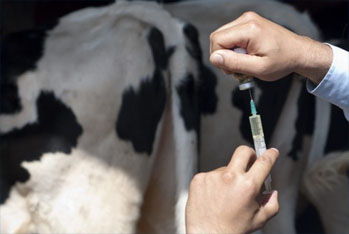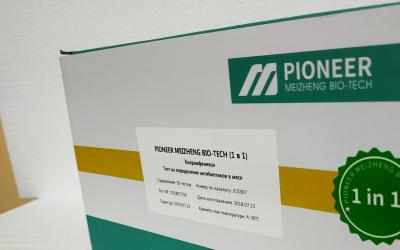Tests for antibiotics in milk

Photo is illustrative in nature. From open sources.
Tests for antibiotics in MILK are one of the most important tools for food quality control and consumer safety. Antibiotics can be used in animal husbandry for animal disease treatment and prevention. However, their use in dairy products can disrupt the balance of microflora in the human body and lead to allergies, antibiotic resistance and other HEALTH problems. Therefore, testing milk for antibiotics is an important step in the production and sale of dairy products.
To date, there are many methods for the detection of antibiotics in milk. One of the most popular is the method of "quick tests". it allows you to determine the presence of antibiotics in milk in the shortest possible time using a quick and easy analysis. For this, a special test system is used, which can be used in any laboratory. This test system uses various reagents to help identify the type of antibiotics in milk samples. Thus, this method allows you to quickly and reliably determine antibiotics in milk.
In addition, there is a "biochemical analysis" method that can also be used to detect antibiotics in milk. This method uses biochemical analytics to determine the type of antibiotics in milk samples. This method provides more accurate results, so it is often used to confirm results obtained with the "quick test" method.
Therefore, testing milk for antibiotics is an important step to ensure consumer safety and food quality. Existing methods for detecting antibiotics in milk help dairy producers quickly and reliably detect antibiotics in their products, allowing them to ensure consumer safety.
Read together with it:
- Новое видео на нашем канале: Вся правда о конине. Едят ли конину в Китае? Сходство казахов и лошадей. О табунном коневодстве.Казы, жая, шужук - символы казахской кухни, без которых не обходится ни один дастархан. Но мало кто задумывается, чем конина отличается от другого мяса, почему её считают диетической и как из простого конского ребра появился знаменитый бескостный казы. В этом видео оживает история - от дегустации у Динмухамеда Кунаева и первых алюминиевых банок до современных технологий переработки и разговоров о ...
- Рассказываем, как белорусская наука поднимает в мировых рейтингах достижения страны в животноводствеНовости темы Беларусь - один из лидеров мирового рейтинга по потреблению на душу населения цельномолочной продукции и сливочного масла. Здесь мы опережаем государства Евросоюза, Канаду и США. При этом наша страна – крупнейший экспортер всех видов молочки. Таких показателей вряд ли бы достигли без мощной научной поддержки НПЦ НАН Беларуси по животноводству. Журналисты издания побывали в центре и уз...




























































